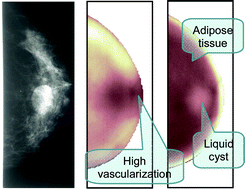Diffuse optical imaging and spectroscopy of the breast: A brief outline of history and perspectives
Abstract
Breast cancer is the most common cancer among women in industrialized countries. At present, X-ray mammography is the gold standard for breast imaging, but has limitations, especially when dense breasts are imaged, as typically occurs in young women. Optical imaging can non-invasively provide information on tissue composition, structure and physiology that can be beneficially exploited for breast lesion detection and identification. In the last few decades optical breast imaging has been investigated, using different geometries (projection imaging and tomography) and measurement techniques (continuous wave, frequency resolved and time resolved approaches). Also, data analysis and display varies significantly, ranging from intensity images to maps of the optical properties (absorption and scattering), tissue composition, and physiological parameters (typically blood volume and oxygenation). This paper outlines the historical evolution of optical imaging and


 Please wait while we load your content...
Please wait while we load your content...